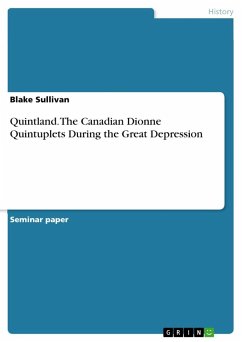Studienarbeit aus dem Jahr 2008 im Fachbereich Geschichte - Amerika, einseitig bedruckt, Note: 1,3, University of Toronto (-), Veranstaltung: Introduction to Canadian History, Sprache: Deutsch, Abstract: History explains the past. Dealing with the past, everybody quickly realizes that there are some things that have changed and some that have remained the same. There are certain periods in history when rapid changes occur and others when time seems to stand still. Often periods of transformation are triggered by technical developments, changing natural circumstances, or new ideologies. These affect each other and create a new situation. In Canadian history, all of these components initiated transformations and we can interpret these transformations ourselves.H. V. Nelles explains in A Little History of Canada where he sees major transformation in Canadian history. After presenting these in a short analysis, I will show another structure which emphasizes four major transformations
that relate to Native Canadians. The first transformation occurred before 1500 when Canada became inhabited by its indigenous nations. Afterwards France transformed the continent until her defeat in 1763. This was the end of the fierce competition between Britain and France which meant Natives could no longer take advantage of their position as military allies. Under British rule the third period of transformation started and a new state formed in 1867: the Dominion of Canada. The British continued to strongly influence Canada throughout the industrialization and Victorian Age. All over this time Natives were oppressed. The fourth transformation started when Natives were allowed to fight for Canada, their home country, during the First World War.
Hinweis: Dieser Artikel kann nur an eine deutsche Lieferadresse ausgeliefert werden.
that relate to Native Canadians. The first transformation occurred before 1500 when Canada became inhabited by its indigenous nations. Afterwards France transformed the continent until her defeat in 1763. This was the end of the fierce competition between Britain and France which meant Natives could no longer take advantage of their position as military allies. Under British rule the third period of transformation started and a new state formed in 1867: the Dominion of Canada. The British continued to strongly influence Canada throughout the industrialization and Victorian Age. All over this time Natives were oppressed. The fourth transformation started when Natives were allowed to fight for Canada, their home country, during the First World War.
Hinweis: Dieser Artikel kann nur an eine deutsche Lieferadresse ausgeliefert werden.








